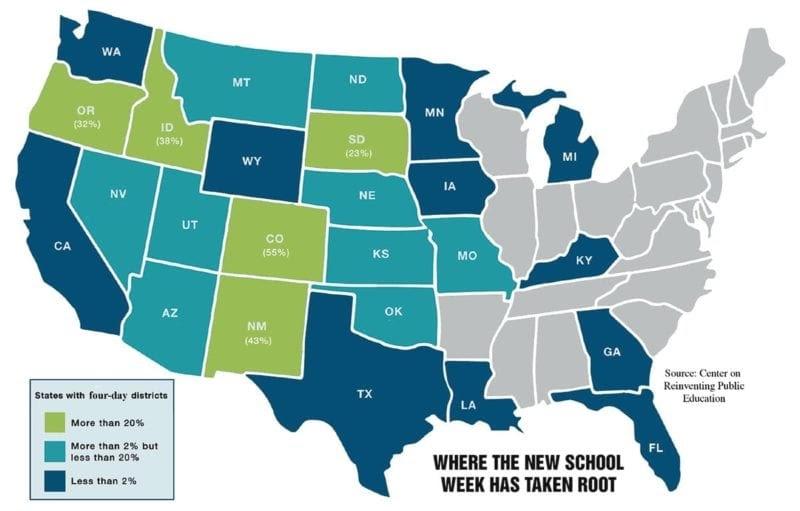Four-day school weeks are becoming popular in school districts around the country. According to research by the National Conference of State Legislatures, 560 school districts in 25 states have at least one school that has chosen to adopt a four-day schedule. The four-day school week, once used by mostly rural school districts, is becoming more common in suburban and urban districts.
Though the four-day school week is becoming more widespread, the Davie County school district has not yet chosen to adopt it. After doing research and surveying students and teachers at Davie High, it can be concluded that it would be a good idea to continue using the five-day school week schedule.
The four-day week is a bad idea for numerous reasons. First of all, the required amount of total time for education does not change just because a school district chooses to switch over to a four-day school week. Oftentimes, the school day has to be lengthened by an hour to an hour and a half to make up for lost time. For example, middle schools and high schools in the Colorado school district 27J start at 8:30 A.M. and end at 4:32 P.M. No student, despite how attractive a four-day week sounds, wants longer school days. Davie senior Carter Cooke echoes this sentiment when asked about the possibility of a change in the schedule.
“A four-day school week would be good as long as the days were not extended a significant amount of time,” said Cooke.
The longer days would negatively impact extracurriculars. Students participating in activities outside of school would arrive home later than usual, giving them less time to do their homework and study, even taking Smart Lunch into consideration. Those participating in sports would be at a particular disadvantage.
“High-school athletes would miss a lot more class time,” said English teacher Donna Dunn.
The free day also poses some problems of its own. Even if one less day allows students to spend more time with their families and catch up on schoolwork, it’s a different story with parents.
In addition, the work week would not match up with the four-day school week, which would lead to some logistical problems in states with school districts using a four-day schedule. Lower-income families would have to find childcare on the off day of the four-day school week, which is often expensive.
The absence of a fifth school day would also affect teachers. In Colorado, 27J implemented the four-day school week in an attempt both to retain their existing staff and attract potential applicants to replace teachers that had left for better-paying jobs. Teachers are also supposed to benefit from the free day by having more time to work on lesson plans and grade papers. In practice, however, this day is just another they have to come into work.
“In districts where [the four-day school week] has been implemented, the fifth day is a built-in teacher workday,” said social studies teacher Mrs. Clark.
In addition, school districts have tried out the four-day school week to save money, but the amount of money they save isn’t much. The National Conference of State Legislatures determined that on average, school districts save about 0.4 percent to 2.5 percent of their overall budgets when they switch over.
Lastly, though there have been a couple of studies on how the four-day schedule affects the academic performance of students, no concrete evidence has been uncovered that shows the change to a four-day school week has either positive or negative results. More time and research is needed to find out more about the relationship between the switch to a four-day week and how well students do in their classes. Until then, it can be reasoned that four-day weeks are not something the school district here in Davie County, or school districts elsewhere, should put into place.






























































